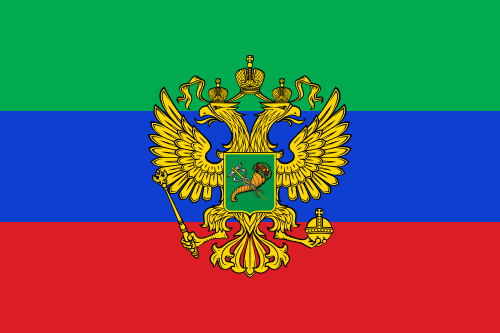This is the flag of Ceuta:

As I said, Ceuta is considered part of Spain. But the coat of arms in flag is Portuguese, right? More or less...
Yes, it's practically identical to Portuguese coat of arms, and History explains it: Ceuta used to be a Portuguese colony; between 1580 and 1640, Portugal was united with Spain due to dynastic reasons and, after that, Ceuta was the only former Portuguese colony that chose to stay under Spanish rule.
No, it's not identical to Portuguese coat of arms, but the difference is subtle: the current Portuguese coat of arms has the seven towers arrenged 3-2-2, while Ceuta has the towers arranged 2-2-2-1.
But the Portuguese influence in Ceuta flag is even bigger. That's the flag of Lisbon, capital of Portugal:

The similarity is not coincidence: in 1415, when Portugal conquered Ceuta, the flag flown was that of Lisbon's patron saint St. Vicent (like above, but with coats of arms), apparently inspired by the heraldry of Dominican Order, important for Lisbon history.
In 20th century, the flag of Lisbon gyronny pattern become the standard for Portuguese cities, so the links between Portugal and the flag of Ceuta only grew.
Comments and suggestions are welcome.








































